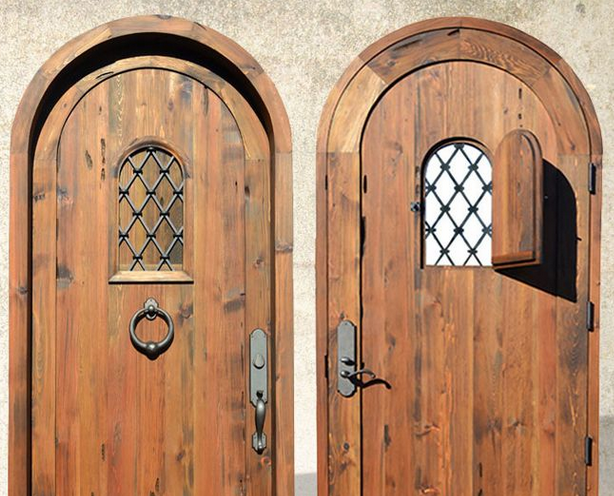Sprechfenster
Speaking Window
In historical architecture a speaking window is the small port in a door or gate which can be opened to speak to people who wish to enter. There is no such well defined equivalent in English, though"peep-hole" is a term known to be used as early as the 1600s for the same purpose, and various terms such as "speakeasy grille", "viewing door", and "viewing window" are in (relatively) modern use for these small panels.
15th Century
Entry incomplete
16th Century
The speaking-window in the Meyer texts occupies a strange position. Canonically there is no strict "speaking window" used and the only similar reference to it is "Brechfenster" (break window).
There seems to have been linguistic drift in the fencing term over the decades as at around the turn of the 15th century we see Sprechfenster in use, yet across through the works of Mair and on to Meyer we see the term change, appearing as Prechfenster in Mair then as Brechfenster in Meyer.
In Meyer's section on Langort he tells us that the guard used to be called Brechfenster, however he then goes on to provide a whole section specifically on the Brechfenster in which he describes it exactly at is used in Mair's text (as a kind of Tag or Kron position.
What is clear is that Meyer uses the Langort and Gerade Versetzung positions identically to the Sprechfenster of old, and uses the Brechfenster in the same way as Mair depicts it half a century earlier.
As a final note there are other references in Meyer to the guard of Gerade Versetzung (ie Longpoint/the speaking window) as being like a door. Specifically in the Dusack section we see the Bochhauw being described as knocking at the door when we hit it repeatedly against the opponent's extended guard, to see if they will open the door to let us in.
